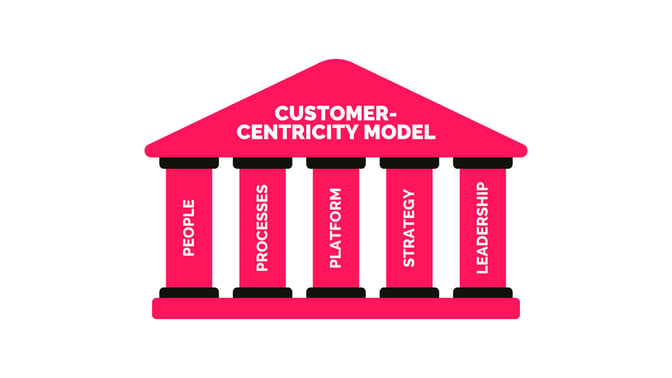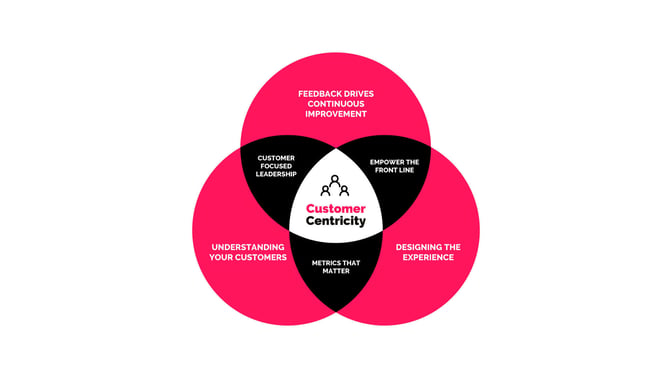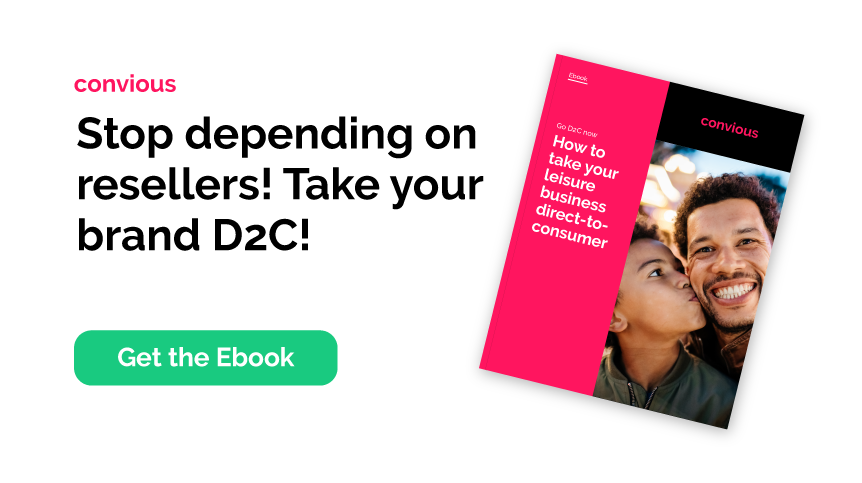How customer-centric is your leisure business? 5 keys to consider.
All leisure marketers know that their guests are their most valuable asset. Having a loyal audience that loves your venue generates recurring business and word-of-mouth recommendations that are hugely beneficial for your brand’s reputation. On the contrary, a large number of unhappy or disappointed customers can strongly compromise your business.
So it’s not a surprise that everyone in the leisure world is always talking about being customer-oriented, customer-centric, or putting their guests first. It’s in the leisure industry’s DNA.
But what exactly is customer-centricity, and why is it important right now?
Customer centricity is about taking a more customer-focused approach to your business. It transcends across the entire customer journey, starting with customer acquisition through transaction and all the way to aftercare. Every part of the business empathises with the customer and focuses on giving the best possible experience to them.
When you operate from a customer-centric approach within your business, you’ll reap the rewards in the form of stronger customer relationships, higher trust, recurring visits, referrals, and higher loyalty across your audience, which will ultimately result in sustainable growth and better profitability within your leisure business.
In fact, Deloitte & Touche found that companies that are customer-centric are 60 percent more profitable.
But, how certain are you that your venue is customer-centric itself? How customer-centric do you believe your leisure venue to be?
Because although understanding customer-centricity is easy, the effectiveness of its implementation within a business is slightly more complicated to measure.
Therefore, the goal of this blog post is to help you identify the maturity level of your leisure business within the customer-centricity model and help you pin-point areas of improvement.
So let’s find out how customer centric your leisure business is!
It all starts by looking inward towards your organization and analyzing these five different areas that can impact your customer experience.

1. Leadership
It’s difficult to become truly customer-centered if top-management is not involved or doesn’t prioritize implementing a customer-centric model within the company.
For a leisure brand to become more customer-oriented, managers should lead by example and be the ones to widespread a customer-first mindset across their entire organization. This is how customer centricity will indeed become a core value for your business.
Spending time with customers, listening to their needs and keeping on learning how to better adapt to them, or even promoting cross functional collaboration, are initiatives that can make any member of the top management team find out how it feels to be a customer, and therefore, make better decisions in the long term. They will become leaders by example, that recognise that an outstanding customer experience can only be achieved with the involvement of the whole organization.
2. Strategy
It is not uncommon to hear the sentence ‘we put our customers first’, but how many companies are really including their customer satisfaction and customer experience as a part of their strategy?
How well do companies really know their customers’ needs, pain-points and expectations? How many of them are really gathering feedback that they can later dive deep into? How many are using it to get closer to their guests and improve their service according to that feedback?
Unfortunately, not many.
Saying your guests are ‘your first priority’ is one thing; actually putting them at the center of your strategy is another.
If you want to move towards a more customer-centric approach within your venue, then you must have specific KPIs focused on customer satisfaction among your strategic goals and objectives. Make sure you cover the following areas:

This will help you and the rest of the staff focus on metrics that help evaluate your customer satisfaction towards your offered service and experience.
3. People
Your leisure business will only be as customer-centric as the people who compose it.
So once you have top management onboard, and your customer-satisfaction KPIs well-defined, it is important that you bring that strategy down to every single area within the organization.
Everyone should be involved in the process and implementation of the strategy; from the marketing team to the engineers, box-office staff, product managers, creatives, or food and beverage folks; they should all have a clear customer-oriented approach to their jobs.
The efforts here should be reciprocated; meaning that management should implement alignment meetings, talks, trainings, or workshops to educate their employees on acquiring a customer-first attitude, while employees (especially those who work closest to the end-customers) should commit to providing valuable feedback that management can use to improve the aforementioned strategy.
4. Processes
Good processes will work as a great lubricant to your customer-centric strategy. They will be the enablers that take your strategy from paper and bring it down to practice, so that your venue can see real results. Contrarily, bad processes will make your strategy stagnate.
So it’s about designing your processes with customers’ needs and wishes at heart, instead of with your products, marketing, or sales. Good customer-centric processes will help you transform the goal of simply focusing on delivering a great product to enriching the customer experience in every possible interaction.
Therefore, when thinking about such processes, it’s fundamental that you think about your customer journey and how customer focused each of the stages you have mapped out are. This relates to questions such as:
What does your customer journey look like? Is it consistent and smooth? Do you personalize your customer journey and experiences all the way from awareness to the post-purchase phase? Or do you go for a ‘one size fits all’ approach?
If that’s the case, you are leaving a great deal of conversion opportunities on the table. Whereas data-driven personalization could help you increase relevance for your prospective customers, and in today's world of stimuli and content overload, people appreciate relevance more than ever. It means showing a little bit more respect for their time and attention, don’t you think?
You might also be interested in: How to use next-level personalization to increase conversions.
When trying to build a customer journey that is completely focused on adapting to each customers’ behaviors and needs on every interaction, you could try to implement best practices such as identifying and targeting customers in different segments, adapting your content and offers differently for each of them, using targeted messaging and a direct chat channel available 24/7, or even feedback and review-collecting tools, just to name a few.
The issue is however, that if you don’t work with a system that allows you to keep track of all of these interactions and automate these processes, your customer-centric model can quickly turn into a hot mess [gulp].
Instead, what you want is unity; a clear overview that allows you to see where your customers and their satisfaction stands along the funnel, so that you can identify where conversion is at its best, and where opportunities for improvement lie.
Remember that behaviors change constantly (this past year was probably more than enough proof of it), and not one customer is identical to another, so ideally, you’ll want to work with a fully integrated and dynamic system that allows you to interconnect these processes, and optimize them in an automated way with the use of the customer data that you are collecting.
This will turn what can at first sight seem like a challenging leap for your organization, into achievable and continuous progress up the customer satisfaction ladder.
5. Processes
Thankfully, technological advancements have opened the door to obtaining unprecedented levels of insight, helping businesses understand their customers in greater detail than previously thought possible.
Traditionally, companies used to focus on a two-way interaction between a company and the consumer; whereas now users have a direct voice to companies 24/7, and consequently, their expectations and demands have risen.
In the current context, you can no longer be reactive when it comes to meeting your customers’ expectations. You need to proactively anticipate their needs, and therefore should aim for agility.
A flexible and dynamic platform that integrates all of the aforementioned processes will help you pivot your leisure business’ initiatives to suit your customers rapidly; this is indeed what will make the difference in the long term.
You might also like: Navigating the wave of COVID19 2.0: adapting to the latest shifts in buying behavior.
There are different platform solutions that can help your leisure venue become more customer-centered and create outstanding experiences at every step of their customer journey, such as the one we have at Convious; an A.I.- powered cloud platform that will help you elevate your one-off customers to recurring die-hard fans of your venue.
How? Because our technology takes an in-depth look at every single touch-point within your leisure customer journey and provides smart data-driven tools and insights to help you encourage your customers to move on to the next step, all the way to loyalty.
Our direct-to-consumer eCommerce model will allow you to use first-hand customer data to thoroughly understand your customers’ changing needs and generate a forever spinning circular customer journey that is focused on what your customers really want and expect, instead of assumptions.
We believe putting your customers at the very core of your strategy is the only smart way to grow bigger, but most importantly, grow better.
If you are serious about becoming more customer-oriented and implementing a customer-centric model within your leisure venue we think we could be the perfect match. Reach out to our team if you’d like to learn more.

